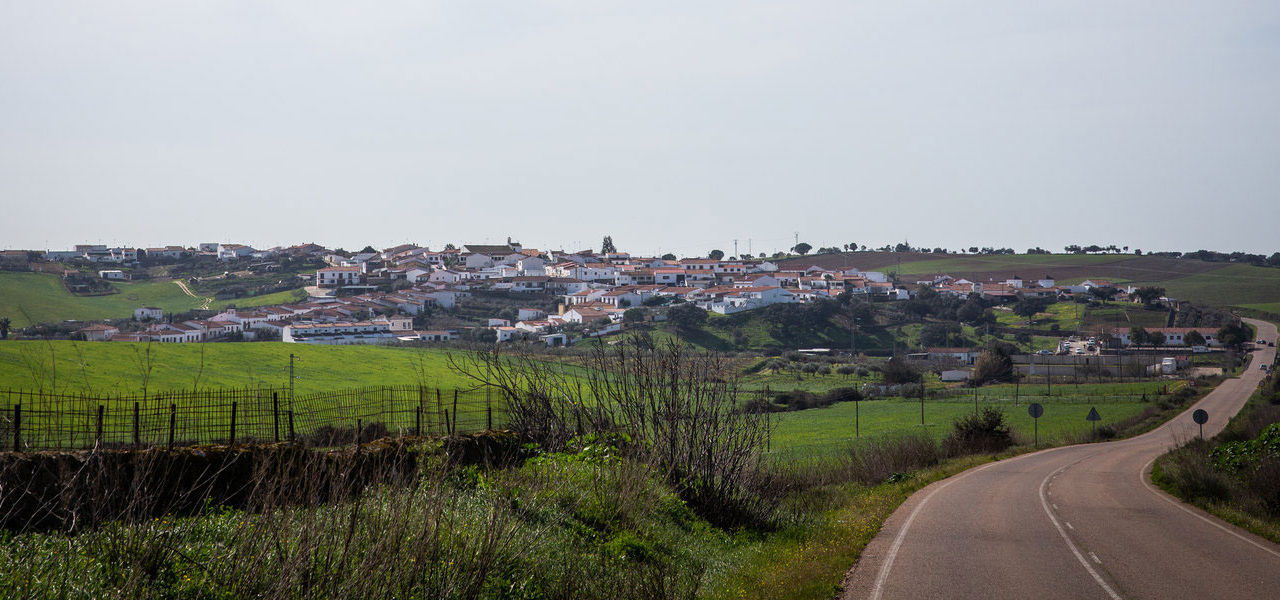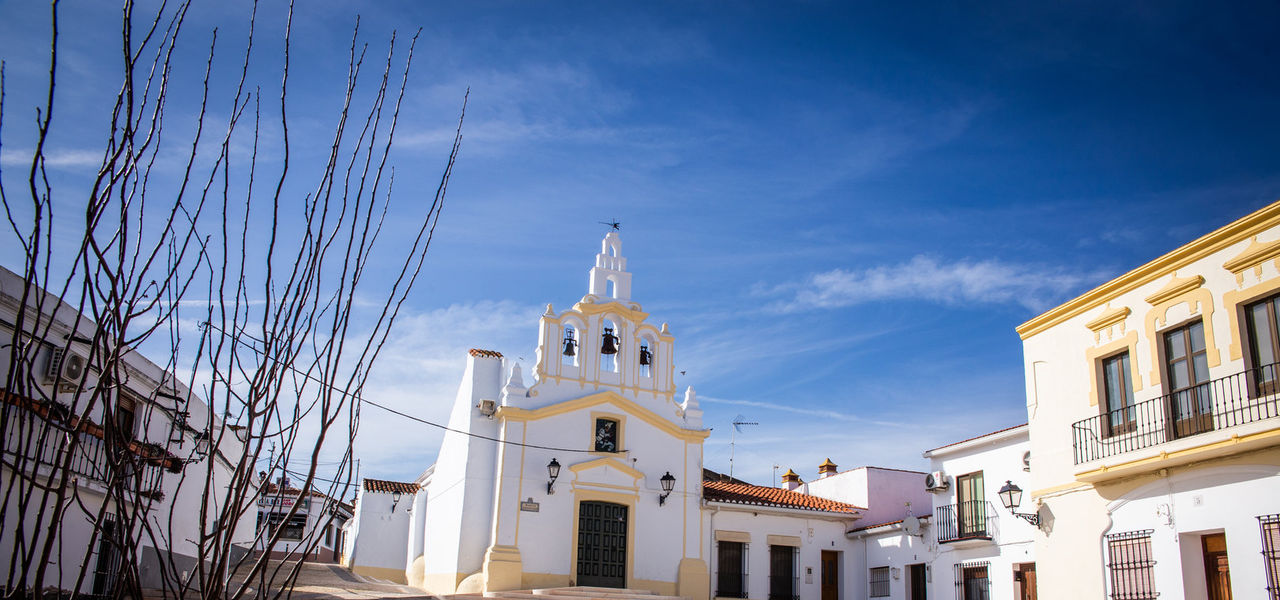
Olivenza Neighboring villages
In the area surrounding Olivenza, tourists can visit several traditional villages that have scarcely changed. The most notable is its traditional architecture, with a strong Portuguese influence, with dwellings grouped around its most prominent constructions, the parochial churches, which were the focal point of these villages. However, the main charm lies in the significant ethnographic value of their architec-ture.
SAN BENITO DE LA CONTIENDA

In the area surrounding Olivenza, tourists can visit several traditional villages that have scarcely changed. The most notable is its traditional architecture, with a strong Portuguese influence, with dwellings grouped around its most prominent constructions, the parochial churches, which were the focal point of these villages. However, the main charm lies in the significant ethnographic value of their architec-ture.
SAN JORGE DE ALOR

Located 5 km southeast of Olivenza, the town is famous for its monu-mental chimneys and the parochial church of San Jorge, which features a large belfry. Inside it is the coat of arms of Bishop Fray Enrique de Coimbra, the first bishop of Ceuta to live in Olivenza. Inside, there are frescos on the lateral altar of the tabernacle with paintings alluding to the Blessed Sacrament. Nearby, next to its cemetery, is the beginning of one of the most interesting routes through the Sierra de Alor, where there are many important examples of local fauna and flora, including the rose of Alexandria, which blooms in April.
VILLARREAL
Located near the border, this village offers another example of tradi-tional construction of a parochial church dedicated to Our Lady of the Assumption. On the access road is the hermitage of Santa Ana, an ex-ample of rural construction. Nearby, on the other side of the Guadiana, atop a hill, is the ancient fortress of Juromenha. From this village starts the eco-river corridor of Ajuda Bridge, excellent for hiking and admir-ing the variety of wild birds. In addition, the construction of the large Alqueva reservoir has also increased its tourism possibilities, since a pier has been built there for a variety of water activities.
SANTO DOMINGO
It is located a short distance from San Jorge, on the western slope of the Sierra de Alor itself. Its most significant attraction is the parochial church of Santo Domingo de Guzmán, which looks like a rural chapel, apart from all the surroundings that lead to the old village of Táliga, today its own municipality, where wild bulls graze in multiple pastures.
SAN FRANCISCO DE OLIVENZA
Together with the four historic villages, the municipality of Olivenza is completed by the colonisation villages, built ex novo following the construction of the Piedra Aguda Dam in 1956 as part of the Badajoz Plan. San Francisco de Olivenza, located to the northwest, owes its name to the Head of State at the time, to whom the project was di-rectly presented and finally accepted. The plots did not produce the estimated yield and in the following decades there was an exodus towards more industrialized cities in the State. However, today there is a resurgence of population, especially from Badajoz, in search of the tranquillity and nature that these towns can offer.
SAN RAFAEL DE OLIVENZA
It is one of the two colonization villages built to take advantage of the irrigation area of the Piedra Aguda dam, inaugurated in October 1956. It is located in the northeast of the Olivenza municipality, near the dam. It owes its name to the Minister of Agriculture at the time, Rafael Cavestany Anduaga, who welcomed the project from the out-set, despite the doubts raised regarding the characteristics of the land, in terms of its permeability. The lack of profitability of the plots, leased to the colonists, led to a severe migration process in the fol-lowing years. Today, the population is recovering thanks to the ap-peal that these quiet and natural places have for the citizens of Bada-joz.